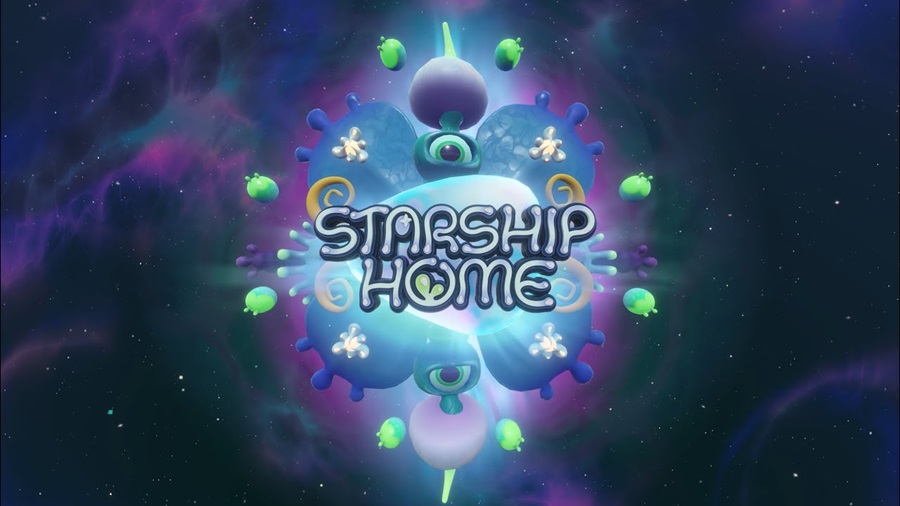
TL;DR for Starship Home
(played on a Meta Quest 3 128 GB model)
| Pros | Cons |
| + Unique & Innovative | – Buggy |
| + Beautiful | – Overly Scripted |
| + Thoughtfully Imagined |
“Once again, Father, you need to max out your 401k if you want to have any chance of a comfortable retirement,”
My daughter said as she came inside and took off her Bluey knapsack.
I tried to avoid her gaze, but her stare was as persistent as it was expectant.
I had to run upstairs to get away; tripping slightly on my ill-fitting lamb onesie as I did.
She shouted after me about beating inflation as she sidled up to the kitchen island and struggled to puncture her apple juice.
“How did she get like this? How can I get this total L-7 fogie of a six-year-old to wake up, man?”
I muttered too softly for her to hear as I shut the door to my room.
“My little conformist needs a good old-fashioned acid trip ASAP.
Send her off into hyperspace to see that all these expectations, man, they’re all just, like, the system.
But she says that that’s ‘not appropriate for children’ and could ‘permanently alter her fragile neurochemistry’.
Like okay, narc. Call the cops then, narc.”
Then—lightspeed—it hit me:
“Of course! VR studio Creature just launched their inaugural Meta Quest-exclusive mixed reality game for baby psychonauts, Starship Home!”
I manic-pixie carpet tobogganed down the stairs and interrupted her sudoku with the good news.
She said something about “experts” warning that children under twelve shouldn’t use virtual reality.
But she eventually came around; either because of my nuanced explanation of how Starship Home is technically mixed reality, not virtual reality, or because of how I said that I’d learn what a 401k was if she tried it.
GAMEPLAY
Starship Home is here to deliver spectacular, psychedelic, cozy-game space adventures in the style and language of an after-school cartoon. Think Animal Crossing meets Rick and Morty.
You begin by receiving a package full of spaceship parts: Several windows, a vivarium for cute little fertilizer aliens, and a few other high-tech odds and ends—both decorative and functional—become yours to decorate your space freely with in mixed reality.
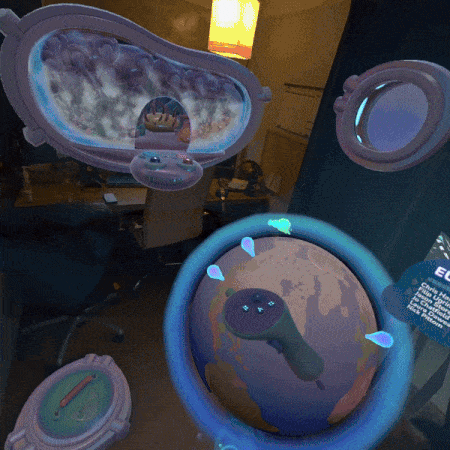
Quickly you learn that these ship parts were meant to be mailed to an eccentric alien scientist on a cosmically important mission.
He video-calls you through your command center window, explaining that he needs you to drive his ship to him.
Complications arise on that front. But you rendezvous with his apprentice who enlists your aid in travelling the stars, collecting and caring for “dreamer plants”—special alien flora—in order to stop the mysterious “blight” that threatens the universe.
These plants each have quirky space-alien qualities: eyes, tentacles, flowers that inflate like balloons, and so on.
If you take good care of them, they’ll each sing a part of a special song a la My Singing Monsters. This song then acts as a beacon for your ship to detect new dreamer plants from various blighted worlds.
When you rescue a new plant you help it overcome its blight by entering its dreams and playing a themed psychedelic minigame.
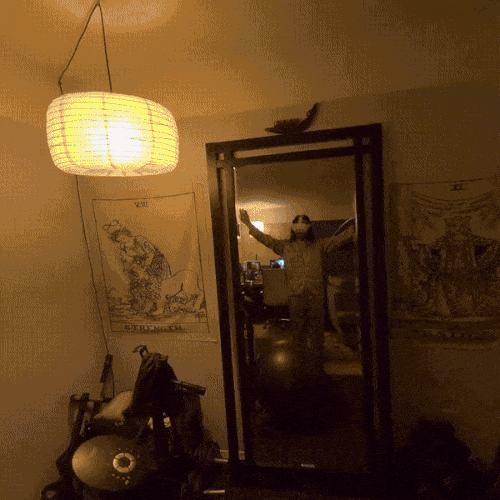
And these dream vignettes are so fun!
Most incorporate thoughtful ways to take advantage of the layout of your home—spawning alien features and creatures along your floors, walls, and ceilings—each with their own particular mechanics.
The dreams offer a spritely, narratively coherent way to explore fresh sections of unique gameplay throughout your short journey aboard Starship Home; breaking up the usual intravehicular gameplay loop of caring for plants and finding new worlds to save plants from.
Now, a few hours of psychic communion with strange, music-enhancing plants isn’t too uncommon for yours truly.
But doing so under the explicit repetition of primary school-level instructions from a cartoon alien is a first.
Or second, maybe… Max third time for sure.
The ever-present NPC guide (the aforementioned professor’s apprentice) was—at least to me—pretty annoying.
They didn’t have anything objectively wrong with them.
Their execution isn’t buggy and their voice acting is well done and enthusiastic.
But I—an adult—don’t want to listen to their particular brand of saccharine, patronizing, Spunky Anime Boy Voice™ enthusiasm (You know the voice I mean: Ash from Pokémon, Luffy from One Piece, Naruto from that other show), as it toddles over-exposition from one obvious goal to the next.
My ship already has a HUD that clearly states my next objective; no need for further (and further and further) instruction.
It’s cute. It’s brief. It’s fun. It’s added detail that shows care from the studio.
And should you actually decide to spend more time gardening in your cozy space-gardening game than your overly-familiar alien friend would like, they’ll repeat themselves over and over again subtly altering the phrasing of their request—or, more often, their patronizingly coy and expositionally instructive musings—until you give in to their persistent hint-dropping.
A “cozy” game with a nagging, fully-voiced sidekick over your shoulder is a mistake.
Creature, please! All the other cozy games just give me nice little vaguely phonetic noises and text bubbles.
I’m here to relax.
Leave the VA to the vignettes!
For example. in one vignette the intergalactic equivalent of an e-mail fishing scam pops up on your screen as a scuzzy-looking alien tries to finesse you out of your money.
This sort of brief non-sequitur adds variety and helps the chaotic interstellar setting feel lived in and verisimilar.
It’s cute. It’s brief. It’s fun.
It’s added detail that shows care from the studio.
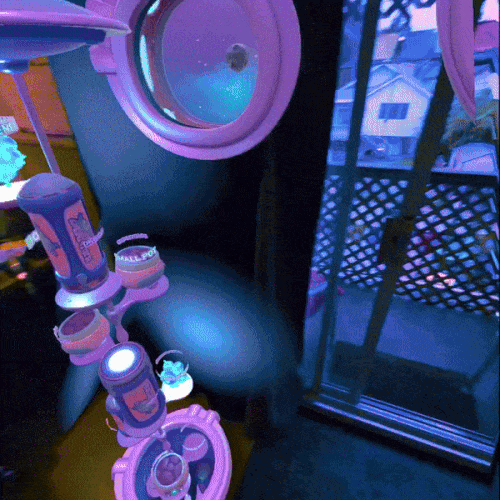
Our NPC helper, however—like the black of the void to the bright of the stars—contrasts and swallows this kind of charming brevity. Their patronizing and unavoidable repetition of already clear goals and plot points—in the way that children’s media must loop their clarion messages to attend to the nascent abilities of budding minds—heavily implies to me that children are the intended audience for this Meta Quest game; something I have mixed feelings about.
The commercial advertises to adults.
The headset is meant for adults.
But the game’s tone heavily implies that it’s aimed at children.
Now, as far I understand, the jury’s still potentially out on whether we should prohibit young children from messing around in extended reality (XR).
Take it from me—a brain who games—some grames make braim gooder.
That said, I think it’s easy to imagine a number of reasons—physiological and, more urgently, psychological—why it might be sensible not to let children use this sort of immersive, perception-informing, and potentially addictive technology until they’re older.
However, if I was going to strap my own child into an XR standalone gaming experience, Starship Home would be a top contender.
The Nick Jr. style bubbliness and simplicity of the spoken script shroud layers of impressive world-building, subtle moral lessons, and an entertaining packaging for science education.
Take it from me—a brain who games—some grames make braim gooder.
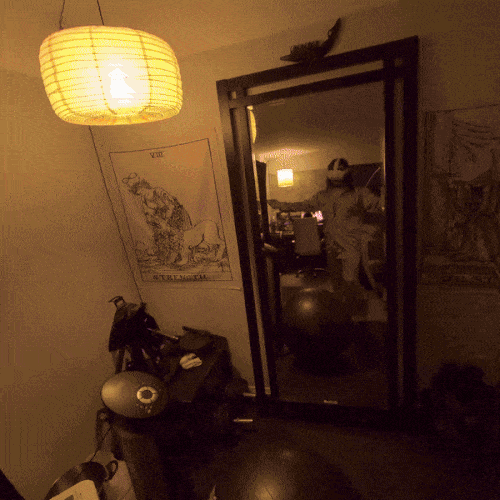
Alright, while word count may have proven my most passionate and personal frustration to be the game’s yappy Martian take on Sora from Kingdom Hearts, the actual biggest problem in my Starship Home experience has been the tech.
This game pushes the Meta Quest 3 to its limits.
When the occasional, small, expected on-release bugs showed up… I ended up rightfully anxious that I would then have to reorganize everything top to bottom again.
Its innovative use of the Quest’s room scanning functionality—to find surfaces like shelves and chairs to place your potted plants upon, for example—is immersive and inspiring. Meaningfully interacting with both the real and virtual world in this way feels like the leap forward in standalone XR technology we’ve been waiting for.
Unfortunately, in at least one crucial way, it feels like we didn’t quite land that leap.
A core aspect of Starship Home (as with many cozy games) is earning nifty collectibles and decorating with them.
However, the more collectibles that you have—in this case, the more dreamer plants that you lovingly place- pivot- rotate- compose– to be- just- exactly– so—the more variables there are to throw the game out of whack, and the more of a chore it is to put them all back when they do.
In my playthrough this happened more than half of the time I took a break from the game and came back.
As such when the occasional, small, expected on-release bugs showed up—waiting eagerly to be solved through the age-old ‘reset your game’ technique—I ended up rightfully anxious that I would then have to reorganize everything top to bottom again. Sometimes this meant remapping my room and/or repotting my plants, on top of putting everything back as I had it.
Further exacerbating this issue is that since this visually and technically impressive title is such a battery hog, you’ll likely end up having to leave the game several times to recharge; praying each time that your creation hasn’t once again gone amok.
VERDICT
Overall I think that there’s a lot to enjoy in Starship Home.
It packs a great diversity of characters, vignettes, and gameplay ideas into just a few hours.
Worlds, creatures, and plants all feel distinct and vibrant.
The music—while repetitive at times—is funky and energetic.
The models, effects, animations, and sound design are all gorgeous.
The whole thing is just beautiful and inventive and a clear signal for what’s to come in standalone XR gaming.
And abstractly, playing a cozy gardening game in your living room is a winner of a concept.
So much of the joy of cozy games comes down to decorating your space—expressing yourself into your surroundings—and in the case of Starship Home, your place for expression really is your place.
Finishing my time with this title I am very much of two minds:
- I’m happy to no longer work around the Jenga-esque ramping danger of a crash that comes with progressing through the game.
- Looking around my now starkly terrestrial apartment, I miss my garden.
I miss my ship.
My psionic vegetable supergroup fled the nest.
The sliding glass door to my balcony no longer cradles views of scintillating foreign nebulas.
Yet because of how frustrating and persistent that object-to-room mapping issue I faced was, I probably won’t go back until and unless I’m satisfied that it’s been fully and completely patched out.
Overall, if you’re interested in seeing the next immersive step in MR gaming (and you don’t mind working around the bugs) then I highly recommend this wonderful, wholesome, and daringly original game.
To Creature, please just let me turn off voices (honestly, even just the one) and sort out the object-to-room mapping issues and I’ll happily bump this bad boy up a couple of points.
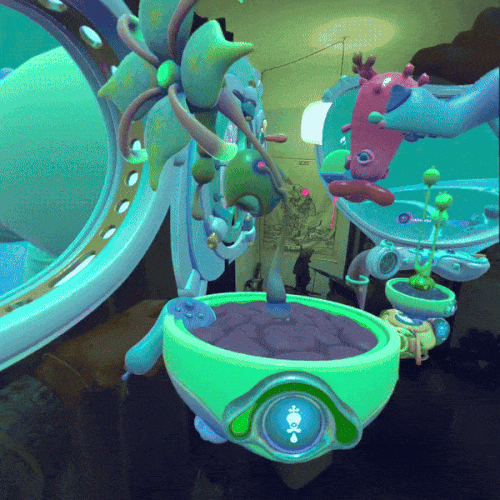
But for now, these few big issues are so inescapable and frustrating that—despite all of its pioneering charm—Starship Home gets a 6/10.
Scoring & Rubric
Scores are out of 10, where 10 is a masterpiece, 1 is unplayable, and 5 is just average.
Gameplay is weighted heavier in the overall score.
Gameplay – 6
Immersion – 6
Visuals – 9
Sound – 8
Performance – 2
Replayability – 7
Image / video credit: Auganix / Creature
About the author
Kierkegaard once said that the artist is like one stuck inside Phalaris' brass bull, which burned up its victims and—due to the formation of its apertures—made beautiful music from their anguish.
The critic, he said, is just like the artist except he doesn't have the anguish in his heart nor the music on his lips.
A lifelong gamer based out of Vancouver, Pelé disagrees with Kierkegaard.
